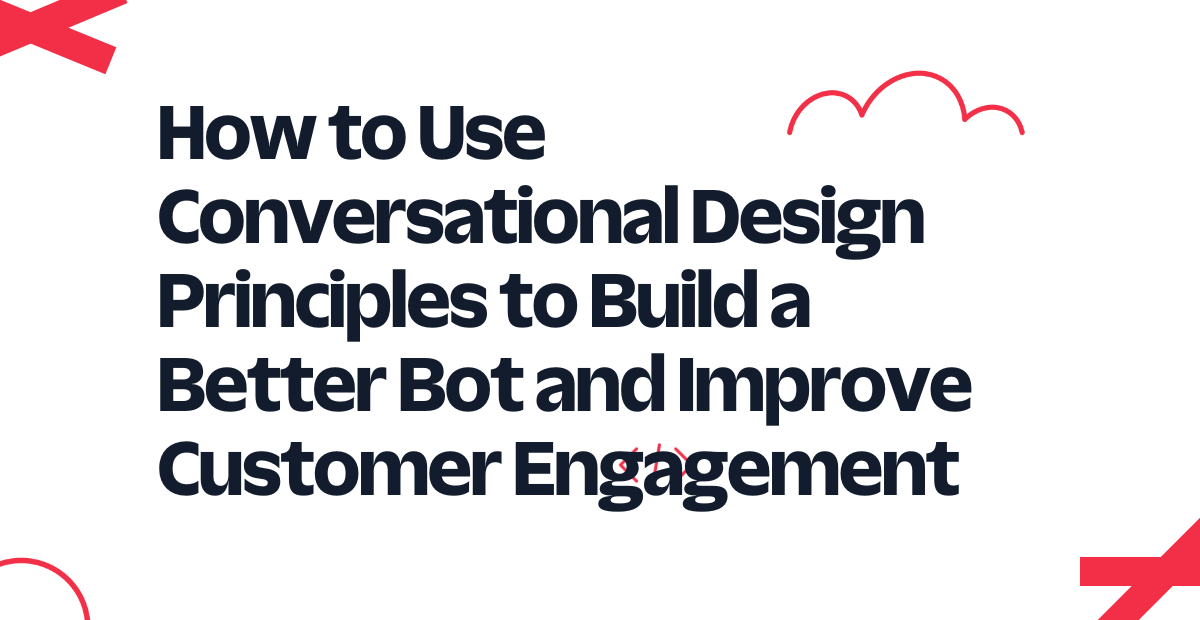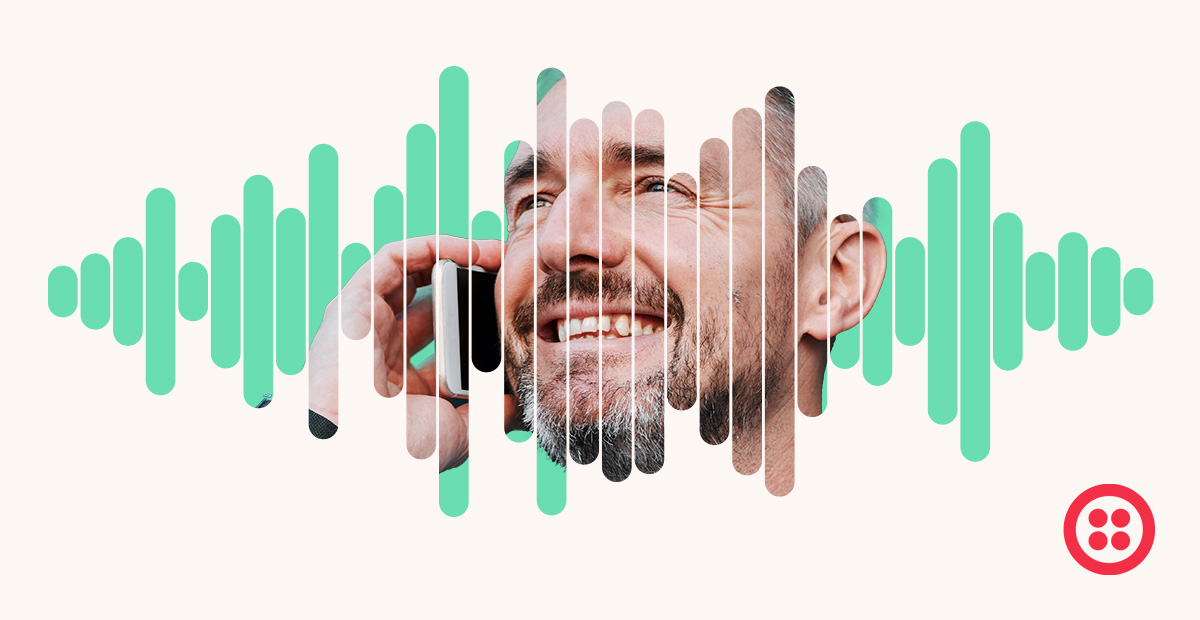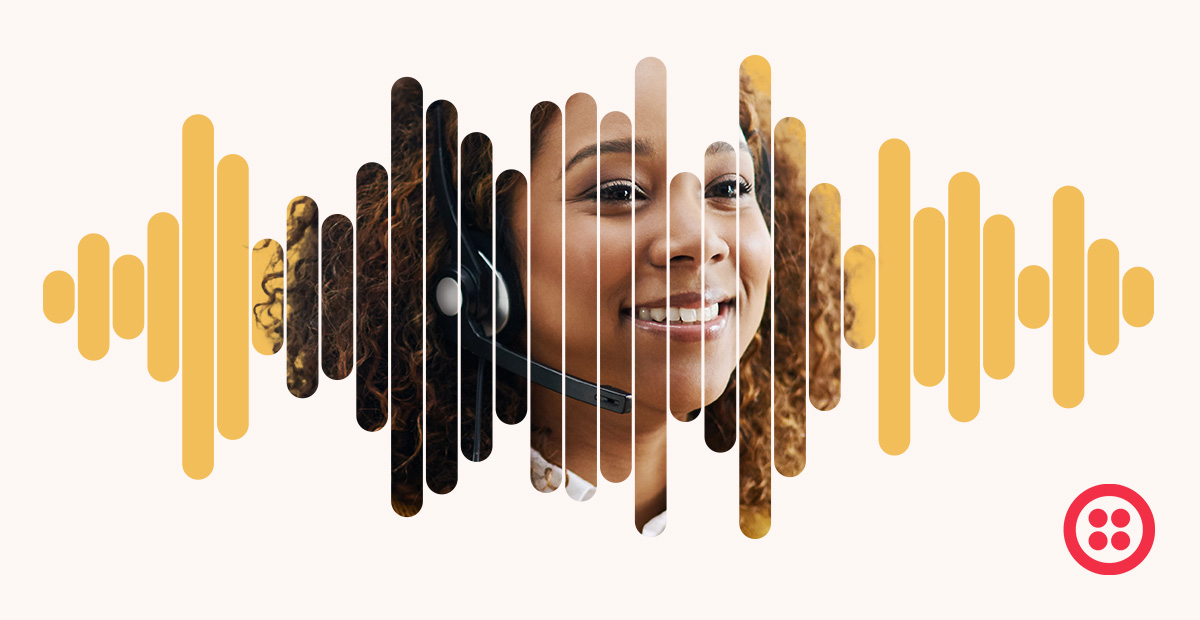How to Use Conversational Design Principles to Build a Better Bot and Improve Customer Engagement
Time to read: 4 minutes

For businesses, the fundamental value of a chatbot is that it scales customer engagement.
For customers, though, a chatbot is only as valuable as the speed and ease with which it can answer a question or complete a task. For that reason, AI-based chatbots, which have natural language understanding (NLU) capabilities, are vastly preferred by users.
Human-like conversations don’t happen by accident, though. AI-based chatbots that engage customers and lead to better conversations are a result of smart decision-making based on communication design principles and thoughtful conversational design.
Today, companies have a number of platforms to choose from, to provide the APIs, infrastructure, and tools needed to build intelligent bots. These platforms are commonly referred to as conversational AI platforms, and let you focus on building a bot experience that works for your users without worrying about the underlying capabilities or infrastructure.
Some of the better known of conversational AI platforms include:
- Google DialogFlow
- Amazon Lex
- IBM Watson
- Twilio Autopilot
Persona, personality, and habits
The conversational design process begins like many design processes do: by creating user personas.
Think about who your audience is. You might actually have different user personas for your bot if you’re using your bot for different audiences. User personas also help define a personality for your bot. Key considerations include age, personality, and habits. As you start designing the scripts for your bots, the conversation should suit the unique characteristics of your audience.
Habits will help inform how you should deploy your bot. Where are you most likely to find your users, and where are they most likely to engage with a bot? The channels available for deploying your bot range from those that have been around for decades, such as Voice and SMS, to newer channels, such as WhatsApp, Slack, and Facebook Messenger.
Beyond mobile phones, there are voice assistants, such as Amazon Alexa and Google Assistant, which are already present in millions of households and supported hundreds of millions of mobile devices worldwide. To identify the channels you need to deploy your bot, you need to identify the channel preferences of your users, and identify the use-cases.
So, once you've figured out your audience, you can start establishing your bot’s personality. Consider the tone of voice, the way that your bot is speaking to someone, as well as mannerisms and the habitual way the bot speaks or behaves.
You can use integrations to turn your text into lifelike speech. If you're using Twilio Autopilot, you can use Amazon Polly, for example. Using SSML tags, 'Speech Synthesis Markup Language', which allows you to change the way voices are generated by computers, you can even alter the way that words sound when spoken.
Watch the on-demand webinar about creating chatbots that keep conversations more human.
Conversation flow
So you’ve discovered where your bot should engage your customers, and the type of tone your bot should have. Now it’s time to think in terms of a holistic conversation, rather than a linear, lock-step process.
When you're designing a conversation for your bot, you’ll want to think about all the different possible paths that conversation can take using a flow map. Here are two examples of different paths that you can consider.
- Full circle
A bot asks a series of questions, but instead of confirming at the end of each response that the bot collected what was said, the conversation keeps going. It’s only at the end of the conversation that the bot reiterates everything that was collected. This gives your user the ability to actually confirm that what was captured is correct. And if something was collected incorrectly, customers can correct the bot.
A customer calls a Maserati dealership. Their bot says, "May I have your name?”
Customer: "Sure. April Speight."
Chatbot: "Car year, make, and model?"
Customer: "2019 Maserati Ghibli."
Chatbot: "And when would you like to come in for your service?"
After answering with the date and the time, the bot then concludes the call, "Thank you Ms. Speight, we'll see you on Monday at 11:00 PM for an oil change for your Maserati." - Circling back
A customer begins with one request but then modifies or changes the original request mid-conversation. The bot acknowledges the customer’s change in the request and keeps the conversation going.
A customer says to its AI assistant, "I need something strong, please order a large cappuccino.”
Chatbot: "Would you like regular milk or almond milk?"
Customer: "Well, you know what? Actually want a blueberry muffin as well.
Chatbot: "You got it. Did you want regular milk or almond milk for your coffee?"
Customer: "Almond milk, thanks."
Before your launch: Time to test
Now you’re ready for arguably the most important part of the bot-building process: testing with real, live customers.
Your human test subject should align with the user personas that you created to be an accurate representation of your intended audience. Another consideration is how many folks you test with. A minimum of 10 people should suffice to test a variety of responses and reactions.
The scenarios you use for testing should ideally match the actual use-case for which your bot is being created. Ask your users behavioral-based questions, such as, “What makes this conversation more human-like,” or, “What do you feel could be improved? And then analyze feedback to determine where and how improvements can be made.
Watch this Twilio SIGNAL talk to learn more about designing a customer-centric bot.
Related Posts
Related Resources
Twilio Docs
From APIs to SDKs to sample apps
API reference documentation, SDKs, helper libraries, quickstarts, and tutorials for your language and platform.
Resource Center
The latest ebooks, industry reports, and webinars
Learn from customer engagement experts to improve your own communication.
Ahoy
Twilio's developer community hub
Best practices, code samples, and inspiration to build communications and digital engagement experiences.


